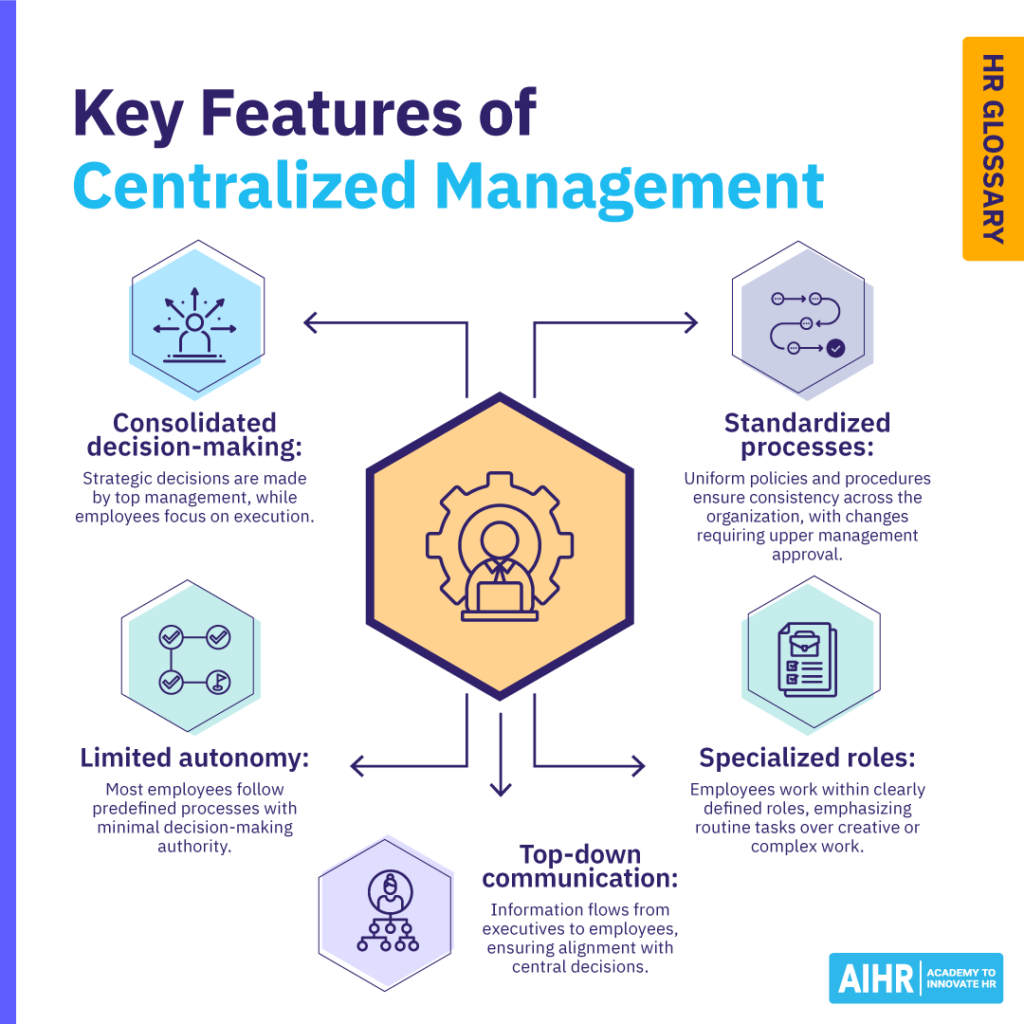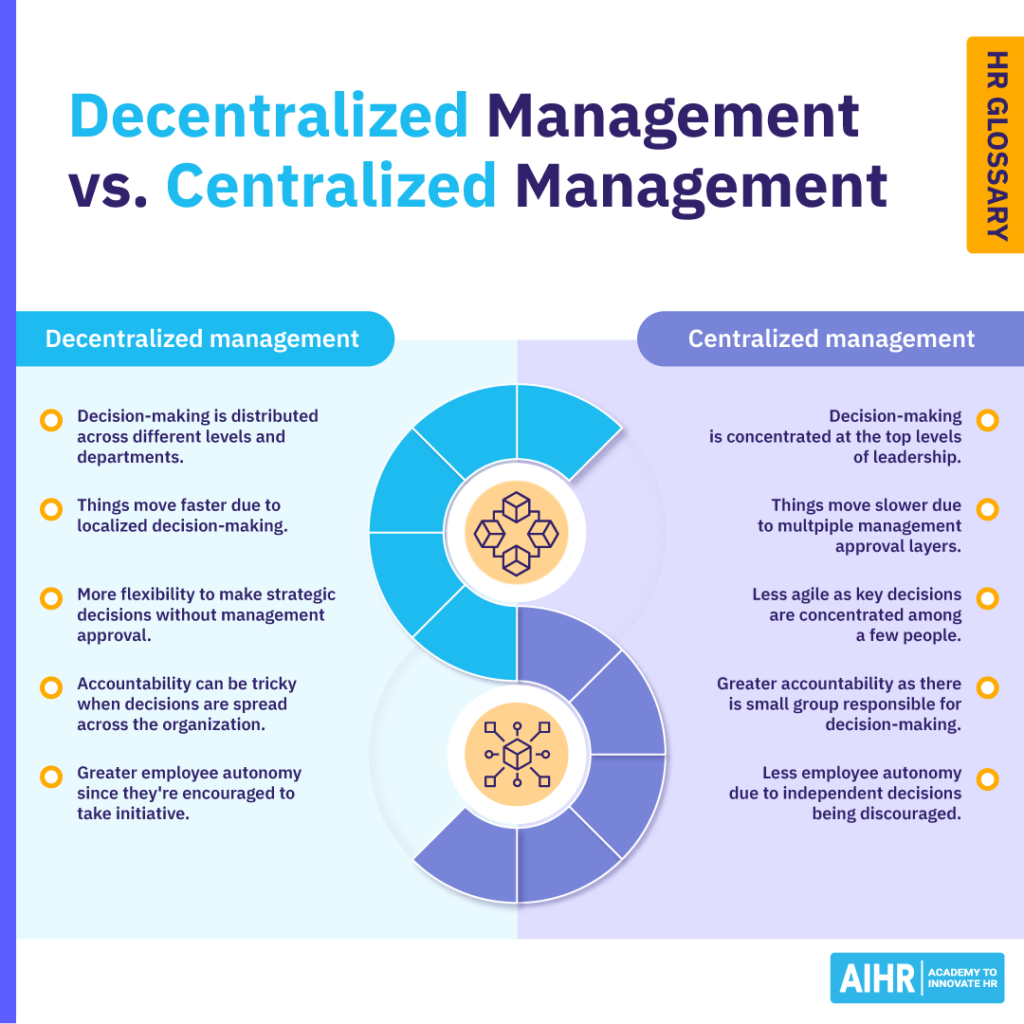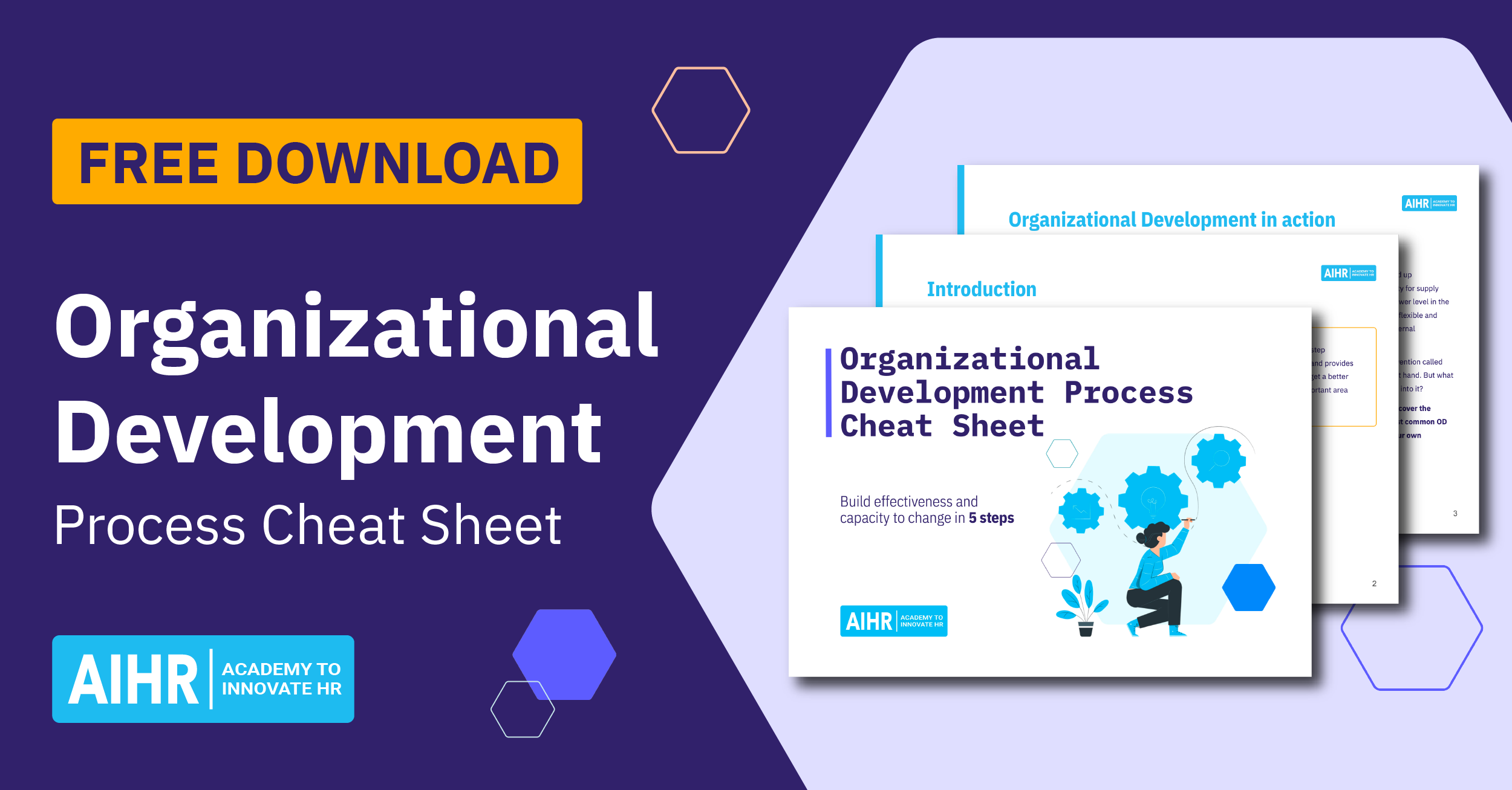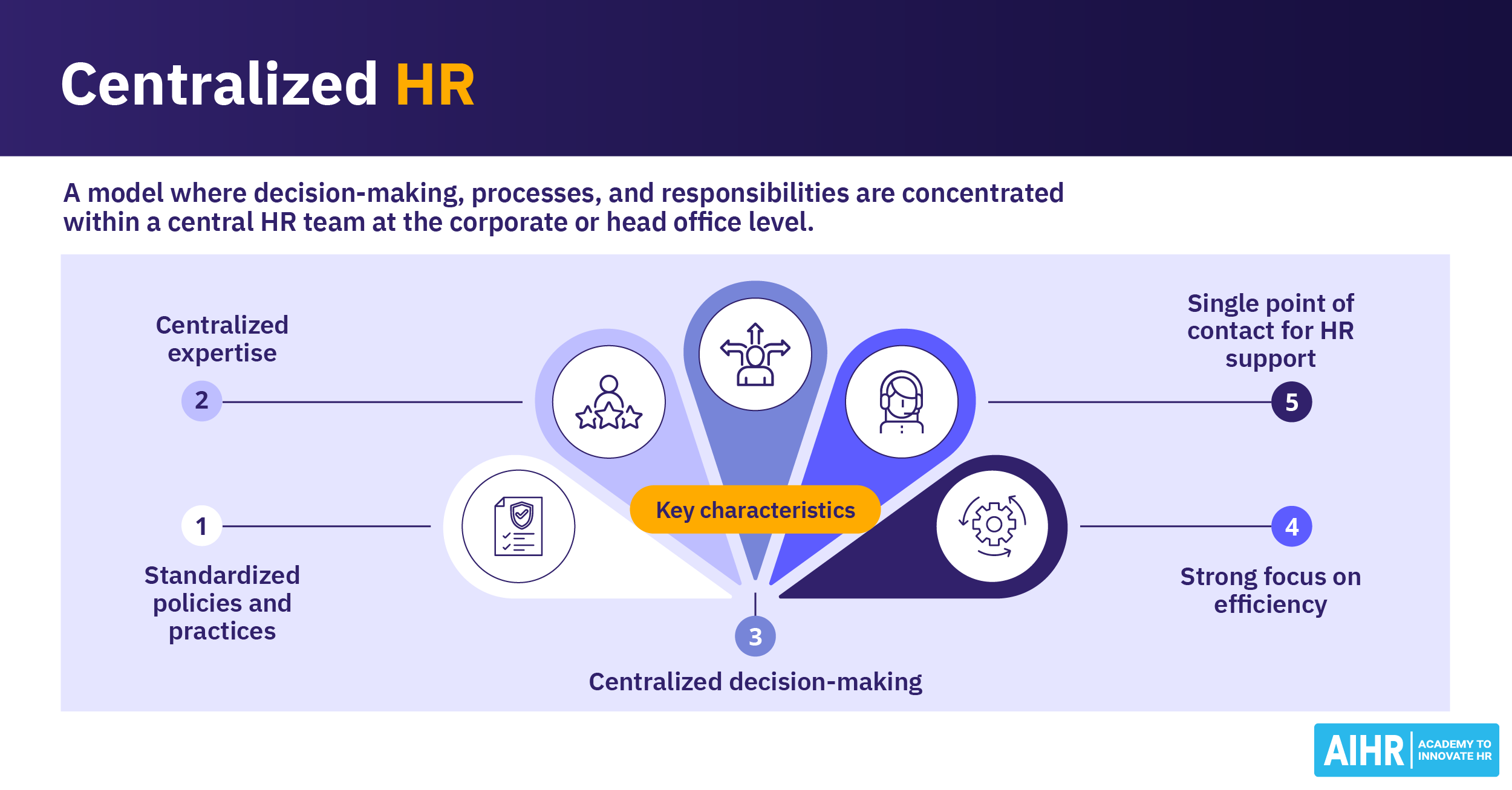Centralized Management
What is centralized management?
Centralized management is a hierarchical system where the majority of the decision-making power is concentrated at the top of an organization. In a centralized management structure, all strategic decisions are made by the executive or senior leadership team, which are then implemented by lower-level managers.
This clear chain of command means centralized management is most effective when implementing large-scale initiatives across multiple departments and locations. However, it has its disadvantages, as centralized organizations are often slow to react to emerging trends and rapidly changing markets.
Key features of centralized management
Here are some key features of centralized management that distinguish it from other types of organizational design:
- Consolidated decision-making: Top management makes critical, strategic decisions, while lower-level managers and other employees execute them as directed.
- Standardized processes: Uniform policies, procedures, and practices are implemented across departments and locations. Typically, employees cannot make changes without approval from upper management.
- Specialized roles: Employees tend to have standardized roles that follow clear procedures rather than roles that require complex or creative tasks.
- Top-down communication: Since decisions are made at the top of the organization, communication is usually top-down. Key information, updates, and announcements are communicated from the executive level to employees.
- Limited autonomy: The majority of the workforce must follow standard procedures and fulfill their tasks as directed by upper management. Individual employees have very little autonomy and decision-making authority.

Examples of centralized management
Here are a few real-life examples of centralized management across different types of organizations:
Corporations with strong executive leadership
Corporations like Samsung have an established centralized structure. Strategic direction comes from the company’s headquarters in Seoul and is implemented across its different product divisions and markets.
The strength of Samsung’s centralized management was demonstrated in 2016 when it made the executive decision to recall the Galaxy Note 7 after consumers reported serious safety issues with the product.
Handle your workforce effectively under any management style
To maintain a productive, satisfied workforce under any management style, you must be able to align workforce needs with management goals, foster employee engagement, and ensure policy compliance.
In AIHR’s Talent Management and Succession Planning Certificate Program, you’ll learn to systematically implement talent management strategies that support business sustainability and create an environment for talent to thrive.
Retail chains
Large retail chains such as McDonald’s, Walmart, and Starbucks use a centralized structure. Overall strategic direction and business decisions are made at the global headquarters, which influences how each chain operates.
In practice, this means store managers usually can’t make any changes to corporate guidelines on product offerings, store layout, and pricing.
Government agencies
Centralized decision-making is common in national governments. In the U.S., for example, the Internal Revenue Service (IRS), the Department of Defense, and the Department of State determines policies and procedures at the federal level, which are then carried out regionally.
Centralized vs. decentralized management
Decision-making
Concentrated at the top levels of leadership.
Distributed across different levels and departments.
Speed of decisions
Often slower due to management approval layers.
Faster due to localized decision-making.
Flexibility
Less flexible since decision-making comes almost exclusively from the top.
More flexible as decisions can be made at various levels of the organization.
Accountability
Transparent accountability as key decisions are made by a few people.
Accountability can be more difficult when decision-making is spread among different managers or departments.
Employee autonomy
Limited authority and decision-making power.
Employees have more autonomy to make decisions and take action based on their roles, expertise, and seniority.
Organization size
More effective in small to medium-sized organizations where management can maintain more control and oversight.
Works well in larger organizations, especially since they must remain agile to make quick decisions and changes.

Advantages and disadvantages of centralized management
Below are the main advantages and disadvantages of centralized management:
Advantages
- A clear chain of command: With little doubt about who makes the key decisions, there can be better communication, less confusion, and increased efficiency. Employees also have a better understanding of their responsibilities and duties.
- Consistency across the organization: Strategic goals being made by a few key people can enhance an organization’s ability to align objectives across different departments.
- Optimized resource use: Decision-makers clearly understand the organization’s needs, objectives, and finances. This allows them to strategically allocate resources to areas that need them most, minimizing waste.
- Enhanced oversight: With greater control over operations, policies, and procedures, senior management can better identify issues and make strategic changes. This level of oversight can improve overall quality and performance.
- Streamlined communication: Centralized organizations typically have simplified communication channels, which can facilitate the sharing of important information throughout the organization.
Disadvantages
- Prone to delays: Having only a few decision-makers can create unnecessary delays and lower overall productivity, especially when managers lack the authority to implement changes without prior approval.
- Lack of employee autonomy: In a centralized structure, employees may feel stuck as they lack the opportunity to take more initiative. This can reduce motivation, limit innovation, and reduce performance.
- Increased senior management workload: Senior management’s responsibility for most strategic planning and major decisions can significantly increase their workload. If not properly managed, this can lead to burnout and lower senior management’s overall effectiveness.
- Slower responses: Centralized management tends to lack the agility to react quickly to changing markets and customer needs, as the need for executive decisions and approvals can delay responses.
- Fewer career growth opportunities: It may be more difficult to move up the ladder in a centralized organization. A smaller core leadership team can reduce the number of opportunities for promotions and overall career growth.
HR tip
A centralized management structure doesn’t mean employees should never offer input or influence company decisions. To empower employees, consider gathering feedback via internal communication platforms, town hall meetings, surveys, and Employee Resource Groups (ERGs). This inclusive approach can help gain widespread buy-in for major changes.
FAQ
The main principle of centralized management is to concentrate decision-making at the top of an organization to ensure control and oversight over key organizational objectives, strategic direction, policies, and procedures.
The key benefits of a centralized management structure are a clear chain of command, enhanced oversight, and consistency across an organization.
An example of centralized management is a corporate headquarters making all major decisions for its branches, like in fast-food chains.









